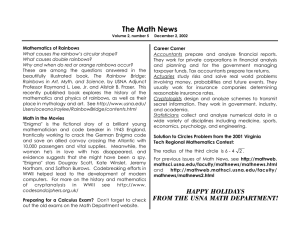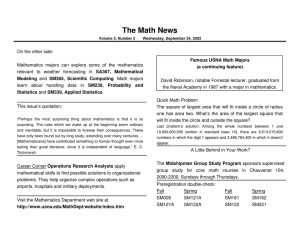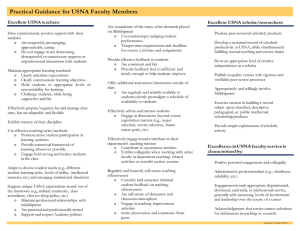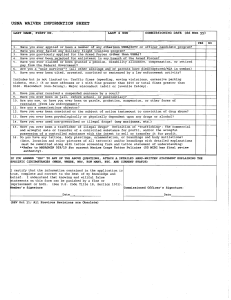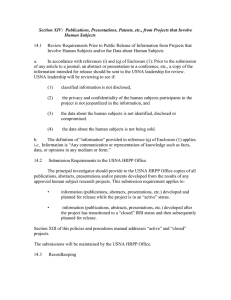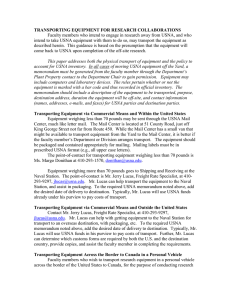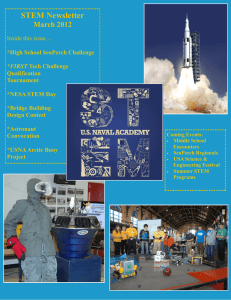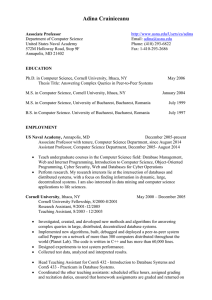The Math News
advertisement
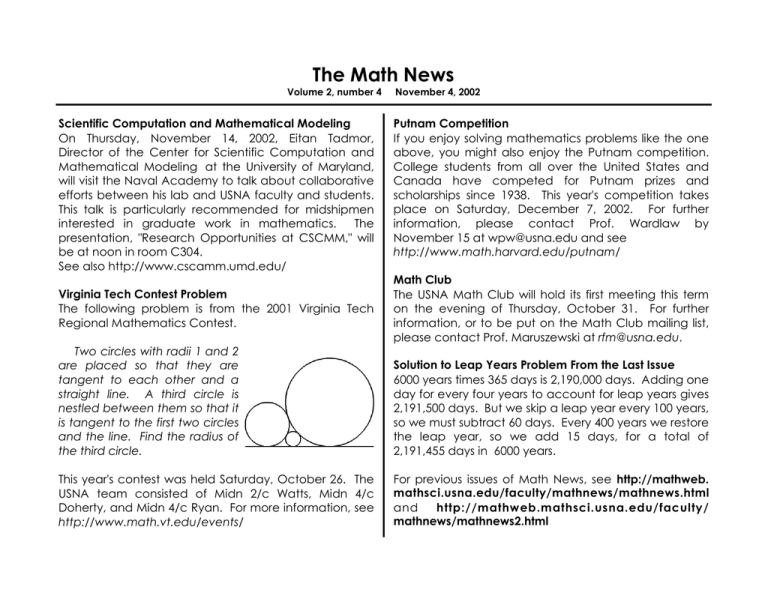
The Math News Volume 2, number 4 Scientific Computation and Mathematical Modeling On Thursday, November 14, 2002, Eitan Tadmor, Director of the Center for Scientific Computation and Mathematical Modeling at the University of Maryland, will visit the Naval Academy to talk about collaborative efforts between his lab and USNA faculty and students. This talk is particularly recommended for midshipmen interested in graduate work in mathematics. The presentation, "Research Opportunities at CSCMM," will be at noon in room C304. See also http://www.cscamm.umd.edu/ Virginia Tech Contest Problem The following problem is from the 2001 Virginia Tech Regional Mathematics Contest. Two circles with radii 1 and 2 are placed so that they are tangent to each other and a straight line. A third circle is nestled between them so that it is tangent to the first two circles and the line. Find the radius of the third circle. This year's contest was held Saturday, October 26. The USNA team consisted of Midn 2/c Watts, Midn 4/c Doherty, and Midn 4/c Ryan. For more information, see http://www.math.vt.edu/events/ November 4, 2002 Putnam Competition If you enjoy solving mathematics problems like the one above, you might also enjoy the Putnam competition. College students from all over the United States and Canada have competed for Putnam prizes and scholarships since 1938. This year's competition takes place on Saturday, December 7, 2002. For further information, please contact Prof. Wardlaw by November 15 at wpw@usna.edu and see http://www.math.harvard.edu/putnam/ Math Club The USNA Math Club will hold its first meeting this term on the evening of Thursday, October 31. For further information, or to be put on the Math Club mailing list, please contact Prof. Maruszewski at rfm@usna.edu. Solution to Leap Years Problem From the Last Issue 6000 years times 365 days is 2,190,000 days. Adding one day for every four years to account for leap years gives 2,191,500 days. But we skip a leap year every 100 years, so we must subtract 60 days. Every 400 years we restore the leap year, so we add 15 days, for a total of 2,191,455 days in 6000 years. For previous issues of Math News, see http://mathweb. mathsci.usna.edu/faculty/mathnews/mathnews.html and http://mathweb.mathsci.usna.edu/faculty/ mathnews/mathnews2.html

